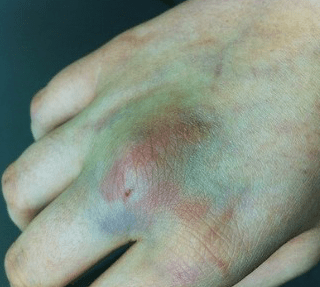My lab develops new fluorescent proteins, protein labeling tags, and tools for imaging human maladies.
I evolve new fluorescent proteins with unique properties compared to currently available fluorescent proteins. New biosensors using this fluorescent proteins are made and characterized for sensing calcium, cAMP, voltage, kinase activity, and other molecules or chemical properties of the cell. We created genetically encoded, photoacoustic imaging probes for deeper imaging than single photon fluorescence for non-invasive optical imaging in living animals. A few mutations make all sensors photoacoustic sensors. A far-red and near-infrared fluorescence cell cycle indicator was developed and high-throughput screening applications are researched for cancer cell treatment.
Richard Ting (Weill Cornell Medicine) and I continue to develop probes. The new fluorescent protein was evolved to express in large quantities (grams are easily purified in <24 hours). The protein is an excellent scaffold or nanocarrier (~2-3 nm) for attachment of chemical molecules to enhance single to noise for positron emission tomography and magnetic resonance imaging. We make fluorescent protein nanoparticles (~12-14 nm) that are stable and passively target tumors in mice. These probes are used for detection, location, and surgical removal of primary and metastatic cancer. Small molecules are already being tested in humans without death and a Biotech company will soon open.
Obtain Rodriguez Lab DNA from Addgene
Free Online Molecular Biology Tools from Addgene
Collaborations
We collaborate with the GW Department of Chemistry, GW Department of Biomedical Engineering, GW Cancer Center (Erik A. Rodriguez is a member of the GW Cancer Center), the National Institutes of Health, and many labs around the world, including W.E. Moerner (Stanford, 2014 Nobel Laureate), Robert Campbell (University of Alberta & University of Tokyo), Roger Zemp (University of Alberta), Jin Zhang (University of California, San Diego), Anna Devor (University of California, San Diego), Richard Ting (Weill Cornell Medicine), John Lin (University of Tasmania), Vesna Zderic (GW SEAS, Biomedical Engineering), and Mary Ann Stepp (GW SMHS, Anatomy and Cell Biology and Ophthalmology). We are always open to new collaborations and feel free to contact us.
Research Interests
Fluorescent Proteins

Fluorescent Biosensors
Photoacoustic Proteins & Sensors
Far Red & Near Infrared Fluorescent Ubiquitination Cell Cycle Indicator (FUCCI)
Human Imaging Tools
Biliverdin Analogues


Biliverdin is produced in humans (500 mg per day) and is responsible for green color in bruises.
Nanomaterials & Nanoparticles

I received my Addgene Blue Flame Award! The award is in recognition of the 100+ requests for pLenti-smURFP (https://t.co/YaYdJbyRSr). Addgene has shared 586 samples in >25 countries for the Rodriguez Lab! Thank you @Addgene! A great addition to #DeckTheLab! pic.twitter.com/cA48gqE525
— Erik A. Rodriguez (@erin_rod_phd) December 7, 2020


